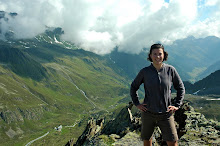Teacher Professional Growth Plan
My second year of the education program has really opened my eyes to what aspects of my profession can be improved upon as I begin my teaching career. Many of these topics I have begun to work on, either during student-teaching or in the university classroom.
Assessment
It was a great learning experience to design rubrics during the great task and the student inquiry project in my final semester. I would like to take these skills further in my planning for assessment.
Goal: Continue to focus on planning ahead for assessment
Objectives to track progress:
- start unit planning by defining what I want my students to know at the end
- build assessment rubrics while designing student projects
- ensure that assessment is for learning as well as of learning
Goal: Continue to focus on rubric use for assessment
Objectives to track progress:
- search for good rubrics using tools such as IO
- develop rubrics myself and with my classes
- focus on clear, well articulated criteria for rubrics
- incorporate self and peer assessment of student work using rubrics
Goal: Design an effective record-keeping program to track student progress
Objectives to track progress:
- develop a spreadsheet with spaces for both grades and notes on student progress
- begin making daily notes on student progress
- refer to notes when discussing student progress with students and parents
Collaboration:
The importance of collaborating with classmates has been a recurring theme during my degree. I would like to continue collaborating with colleagues to better my practice.
Goal: Collaborate with other staff members to improve my teaching practice.
Objectives to track progress:
- renew subscription to ATA science council to keep up with current educational ideas in science
- show my unit/lesson plans to colleagues and ask for feedback
- ask to observe colleagues’ classes
- take questions I have about my practice to curriculum leaders and administration
Inquiry:
The potential educational benefits of inquiry-based learning have been emphasized during my program. With newfound confidence in developing inquiry projects based on designing projects in my final semester in Intelligence Online (IO), I hope to take this type of learning into my future classroom.
Goal: Develop inquiry-based science projects
Objectives to track progress:
- plan at least one inquiry-based task for students each course/semester
- continue working in IO to design authentic tasks
- meet with other teachers to discuss the possibility of cross-curricular projects
Classroom Structure/Atmosphere
Even within inquiry-based learning it is important to have structure and routine in the classroom setting to help student focus on their work.
Goal: Develop effective classroom routines that promote a comfortable learning environment
Objectives to track progress:
- develop a daily structure in my classroom so that students know what they are supposed to do when they enter each day
- get to know students as learners and individuals
- promote routines that help students collaborate effectively
